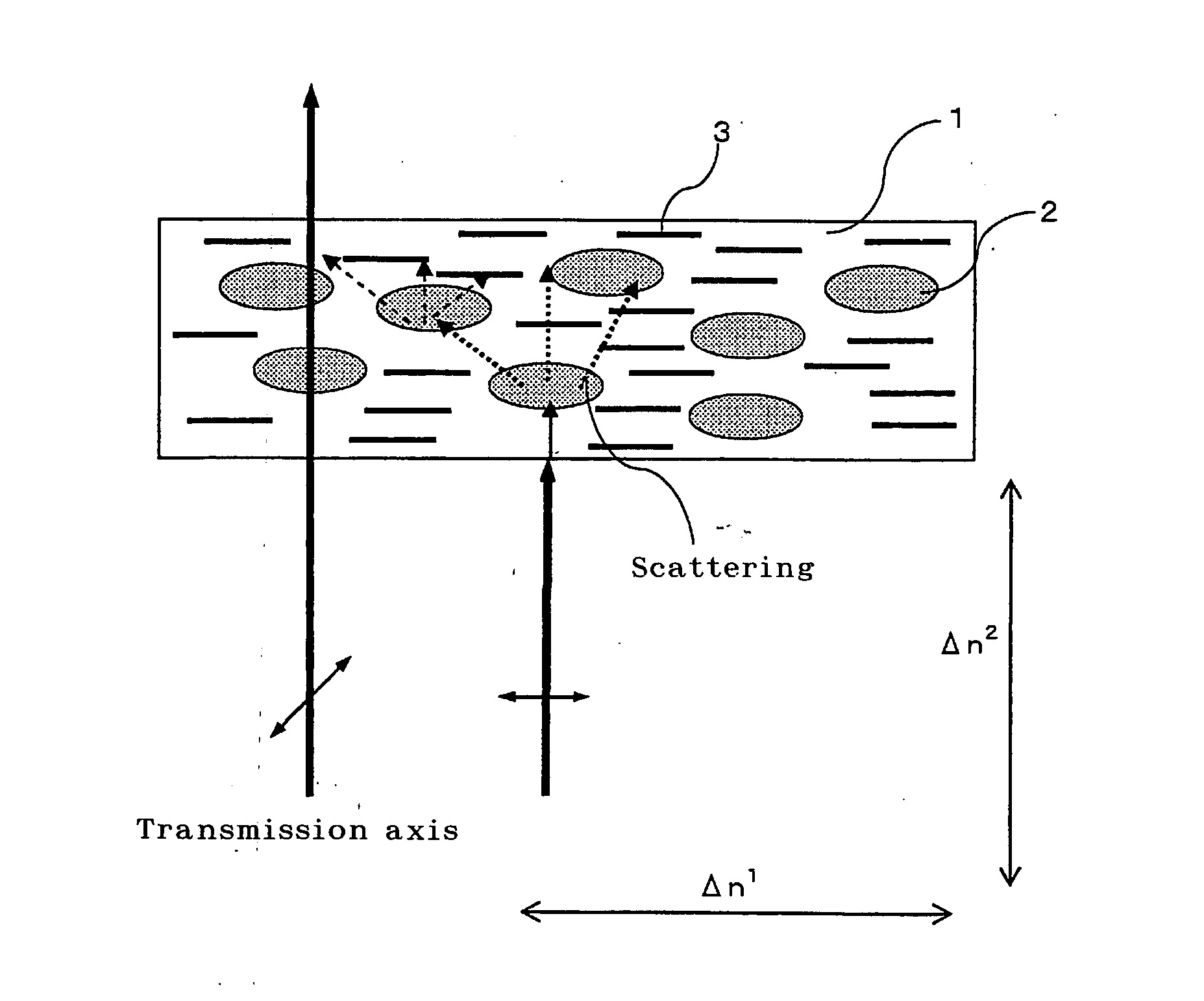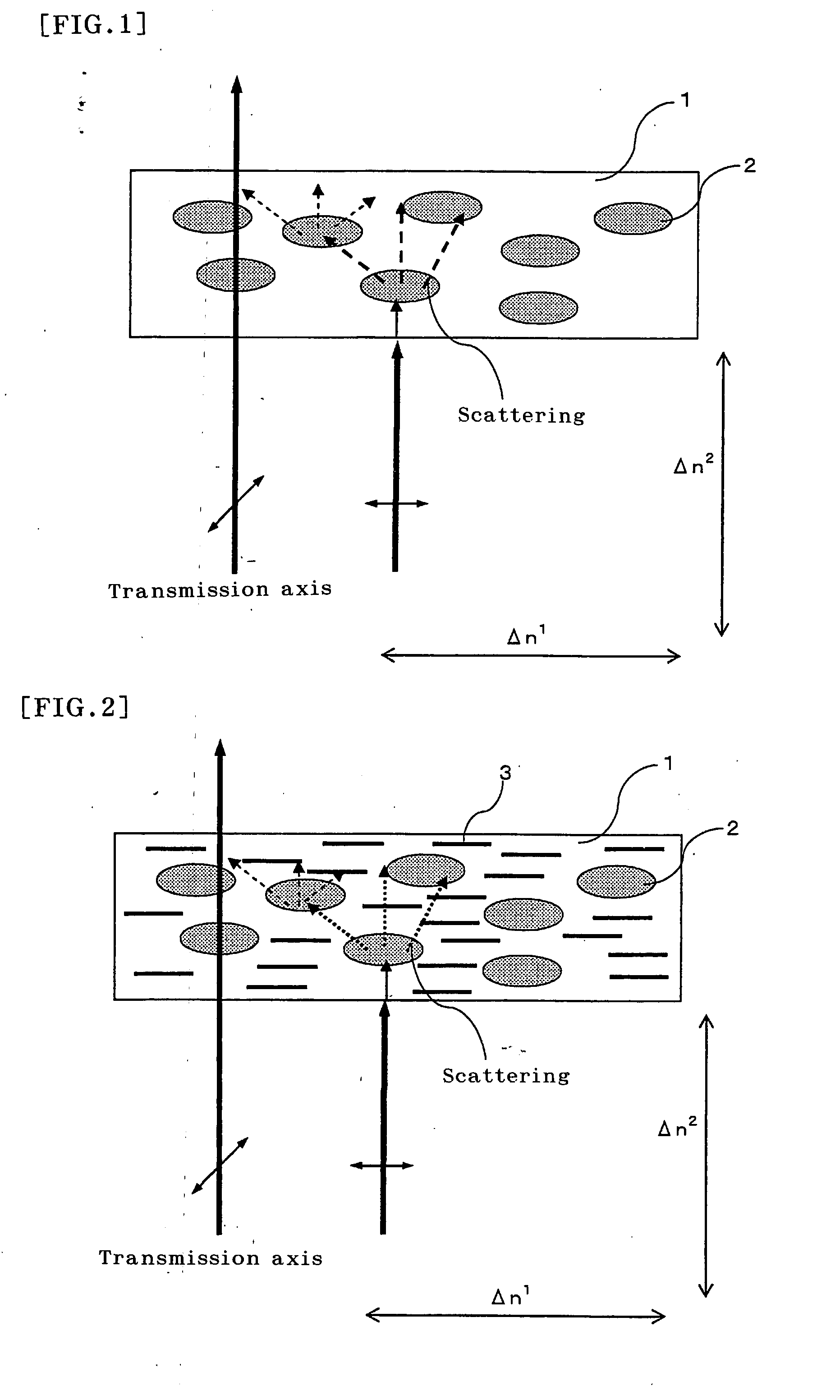Polarizer, Polarizing Plate,Optical Film, and Image Display
a polarizer and optical film technology, applied in the field of polarizers, can solve the problems of insufficient heat resistance, inability to achieve sufficient heat resistance, and only being used in very limited applications of polyene based polarizers, and achieves high transmittance, reduced unevenness, and high degree of polarization
- Summary
- Abstract
- Description
- Claims
- Application Information
AI Technical Summary
Benefits of technology
Problems solved by technology
Method used
Image
Examples
example 1
[0144] A polyvinyl alcohol aqueous solution of 13% by weight of solid content in which a polyvinyl alcohol resin having a degree of polymerization of 2400 and a 98.5% of a degrees of saponification were dissolved; a liquid crystalline monomer (nematic liquid crystal temperature range is 40 to 70° C.) having acryloyl groups at each terminal of both of a mesogen group; and glycerin were mixed so as to be polyvinyl alcohol: liquid crystalline monomer: glycerin=100:15 (weight ratio), and the mixture was heated more than a liquid crystal temperature range, and was agitated with a homogeneous mixer to obtain a mixed solution. After degassing of bubbles existing in the mixed solution concerned by left to stand at room temperature (23° C.), the mixed solution was coated by a casting method, and a cloudy film having a thickness of 70 μm was obtained after drying.
[0145] The film was stretched about 3 times in a bath composed of an aqueous 0.5% by weight hydrochloric acid solution at 10° C., ...
example 2
[0149] A polarizer according to the invention was obtained using the process of Example 1, except that the time of the heat treatment at 130° C. after the stretching was changed to 15 minutes.
example 3
[0150] A polarizer according to the invention was obtained using the process of Example 1, except that when the mixture solution for use in manufacturing the polarizer was prepared, a hydrophilic dichroic dye (INK GREY B manufactured by Clariant (Japan) K.K. was mixed such that the weight ratio of the polyvinyl alcohol / the liquid-crystalline monomer / the dichroic dye / glycerin was 100 / 5 / 0.5 / 15.
PUM
| Property | Measurement | Unit |
|---|---|---|
| refractive index | aaaaa | aaaaa |
| length | aaaaa | aaaaa |
| wavelength range | aaaaa | aaaaa |
Abstract
Description
Claims
Application Information
 Login to View More
Login to View More - R&D
- Intellectual Property
- Life Sciences
- Materials
- Tech Scout
- Unparalleled Data Quality
- Higher Quality Content
- 60% Fewer Hallucinations
Browse by: Latest US Patents, China's latest patents, Technical Efficacy Thesaurus, Application Domain, Technology Topic, Popular Technical Reports.
© 2025 PatSnap. All rights reserved.Legal|Privacy policy|Modern Slavery Act Transparency Statement|Sitemap|About US| Contact US: help@patsnap.com



